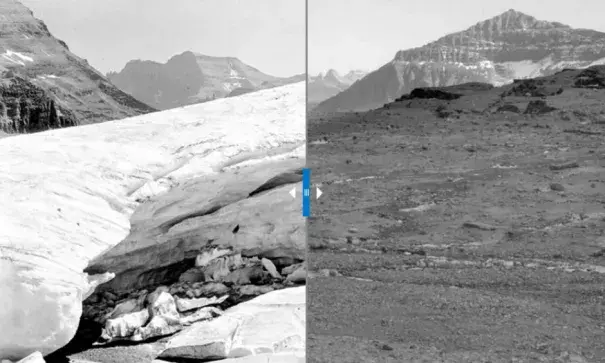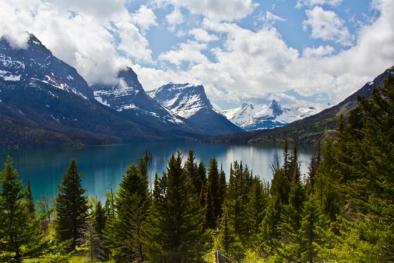Glacier National Park Is Losing Its Glaciers

Glacier National Park is losing its namesake glaciers and new research shows just how quickly: Over the past 50 years, 39 of the parks glaciers have shrunk dramatically, some by as much as 85 percent.
Of the 150 glaciers that existed it the park in the late 19th century, only 26 remain.
“The trend is consistent, there’s been no reversal,” Daniel Fagre, the U.S. Geological Survey scientist who led the research, said.
The loss of glaciers potentially affects not just tourism to the park, which hit a record 2.9 million visitors last year, but also local ecosystems that depend on the summer release of glacial meltwater.
The pristine, 1 million-acre park sits along the border with Canada in Montana and has long been a poster child for climate change in U.S. national parks. Side-by-side photo comparisons show in the starkest terms just how far some glaciers have retreated, with some only reduced to small nubs of ice.
The retreat has happened as temperatures in the region have risen by 1.5°F since 1895 as heat-trapping greenhouse gases have continued to accumulate in the atmosphere.
A 2014 study found that it is this human-caused warming that accounts for the bulk of worldwide glacier loss over the past few decades.
Related Content




